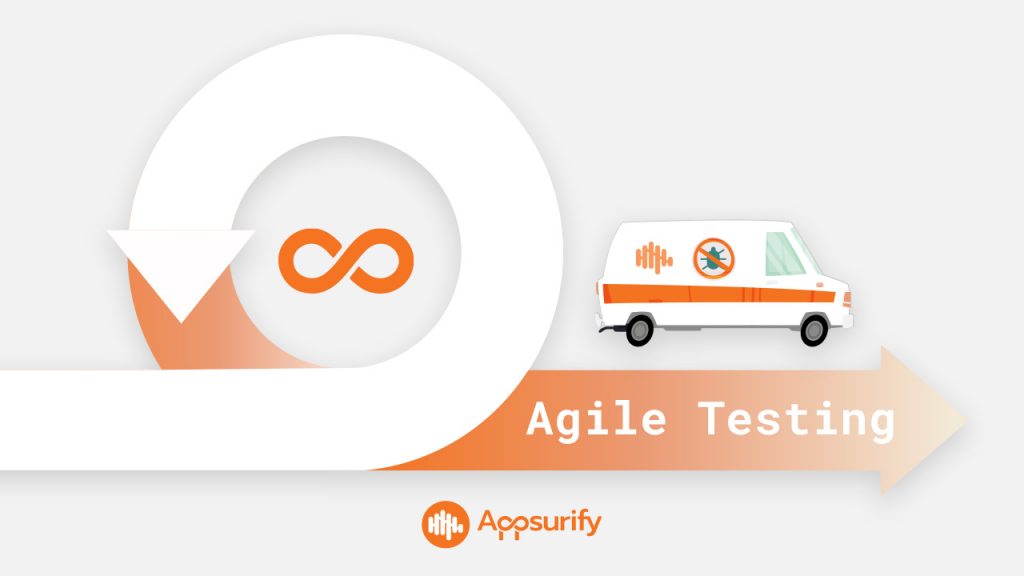
Traditionally, software testing takes place during pre-determined phases of a software development project and is typically handled by a team of dedicated quality assurance professionals. While this approach has helped detect issues and works to deliver quality products, it is also creating team silos and offering very little flexibility. Because today’s software developers are required to move fast and remain flexible enough to respond to changing customer requirements, they need an approach that can solve problems when they arise – not when it’s too late. As a result, agile testing has become a popular alternative that’s helping QA teams deliver high-quality products more efficiently while satisfying customer demands and building stronger teams.
So, if you’re looking to get a bit more agile with your software testing, here’s what you should consider.
What Is Agile Testing?
The fundamentals of agile testing date back to the early 2000s with the formulation of the agile principles, which focus on collaboration, customer satisfaction, and flexibility. Using the agile testing approach, QA engineers and software developers work closely together during the entire development lifecycle.
The agile manifesto advises business professionals and developers to collaborate daily. However, modern software development teams may also be comprised of quality assurance engineers, user experience designers, and other relevant functions. Professionals with different areas of expertise are encouraged to share their knowledge with other team members.
Working as a cross-functional team, testers will acquire knowledge of the customer, their requirements, and the eventual use case for the finished product. In turn, QA will be able to help developers and designers create a product that can meet these requirements by identifying potential problem areas early on.
As testers and developers share the objective of delivering working code and software as quickly as possible, the two functions will share responsibilities from their respective domains. As such, it is important that all team members understand the frameworks that dictate when a certain phase has been completed and work is considered satisfactory. Additionally, developers will acquire basic knowledge of QA processes, just as testers will become familiar with development work.
How QA Works in the Agile Testing Methodology
With an integrated QA and development team, individual responsibilities may differ from what team members are used to. Whereas QA teams would dedicate a considerable amount of their time to documentation, they can now focus on key problem areas to resolve issues faster.
In practice, testers and developers work closely together to produce working parts of the final product more efficiently, without compromising quality. Delivering working code to the customer for review and feedback helps ensure that the work in progress meets customer standards. The agile team does not proceed to the next stage if there are issues in the current iteration. This prevents a backlog of bugs from accumulating and potentially delaying the delivery of the final product, known to many as technical debt.
The agile manifesto strongly recommends face-to-face interactions between team members. However, these principles were formulated over two decades ago. As teleconferencing tools are now widespread, teams can take advantage of regularly scheduled calls and chat to stay up to date on the latest developments.
Shifting from a Traditional to an Agile Testing Model
Traditional testing helps deliver a quality product at the expense of delivery speed and flexibility. While these types of projects have the advantage of detailed planning in terms of timelines and budgets, they also require large volumes of documentation and rigorous project management. As a result, there is little opportunity to accommodate changes or new features late in the development cycle or react to shifts in the competitive landscape.
Agile testing welcomes changing requirements and encourages teams to frequently engage with their customers. Thus, customers can get a feel for working components and provide feedback throughout the process. Including testers in these discussions can help make sure that new goals are feasible, and that working software can be delivered within deadlines.
Shifting to an agile testing model may require some cultural changes in your organization. Team members may need to become accustomed to working together across departments and accept new routines, such as daily “stand-ups”. Organizations that were previously focused on reaching milestones and completing pre-defined phases may need to encourage an attitude shift towards customer requirements and supporting team members.
Implementing an Agile Approach
Modern test automation tools, such as TestBrain can help accelerate the delivery of working software and minimize manual processes associated with test scenarios and documentation. By leveraging machine learning, automation testing tools can help teams prioritize areas that have been changed by developers. Additionally, offloading some degree of manual testing allows developers and QA to devote more of their time towards edge cases and stress testing their product.
Since agile teams are built cross-functionally, most members will be required to perform certain tasks associated with testing. At critical project milestones, agile teams should reflect on their processes and look for ways to optimize their workflows. Here, QA plays a critical role in helping team members streamline the delivery and formatting of code, as well as take advantage of the benefits of automation.
Foster Innovation and Improve Automation Testing with TestBrain
With the right tools and processes, Agile testing allows teams to deliver high-quality software and respond to changing customer demands more efficiently. Due to the focus on collaboration and communication between team members, agile environments can foster innovation and improve customer retention.
Getting started with agile testing may require some cultural shifts in your organization as team members learn to work cross-departmentally. Leveraging testing automation solutions such as TestBrain can expedite this shift and help your team deliver high-quality software faster. To learn more about TestBrain, connect with our team or try free today.
